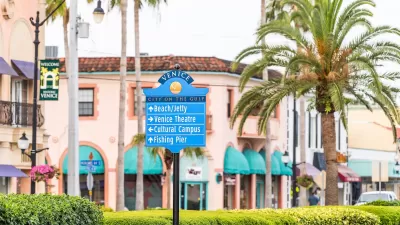The trend toward bigger houses makes the efficient and cool styles of modernism look inadequate to many Americans. A new article by the Architectural Record studies the difficult work of preservation efforts all over the country.
Sarah Amelar provides a wide-ranging, detailed analysis of the threats to famous examples of modernist residences. In introducing the threat, Amelar names a few of the famous architects whose work has been subject to preservation controversy: “In recent years, wrecking balls have hovered perilously close to modern homes by Rudolph Schindler, E. Fay Jones, and Frank Lloyd Wright, as well as key works by lesser-known talents. Currently, the survival of the 1958 Richard Neutra–designed Connell House, tailored to a spectacular site in Pebble Beach, California, has been the subject of a two-year battle; and the owners of a 1966 residence in Coral Gables, Florida, by one of the region's leading midcentury Modernists, Alfred Parker Browning, are suing the city for upwards of $7 million for denying them the option to raze it.”
Amelar’s survey of preservation battles ranges widely, from Pasadena, California to Wayzata, Minnesota to Fayetteville, Arkansas, just to name a few.
Here also, is an example of an organization that has managed to find success in preserving modern homes: “Among the most interesting models for reclaiming endangered homes is the work of the nonprofit Cape Cod Modern House Trust (CCMHT). Since 2006, it has salvaged midcentury dwellings owned by the Cape Cod National Sea Shore, structures acquired incidentally when the National Park Service consolidated this mostly wild land in 1961.”
Yet, the reality of the situation: “Undeniably, the right match between house and owner are essential to a happy ending.”
FULL STORY: Endangered Species

Planetizen Federal Action Tracker
A weekly monitor of how Trump’s orders and actions are impacting planners and planning in America.

Map: Where Senate Republicans Want to Sell Your Public Lands
For public land advocates, the Senate Republicans’ proposal to sell millions of acres of public land in the West is “the biggest fight of their careers.”

Restaurant Patios Were a Pandemic Win — Why Were They so Hard to Keep?
Social distancing requirements and changes in travel patterns prompted cities to pilot new uses for street and sidewalk space. Then it got complicated.

Platform Pilsner: Vancouver Transit Agency Releases... a Beer?
TransLink will receive a portion of every sale of the four-pack.

Toronto Weighs Cheaper Transit, Parking Hikes for Major Events
Special event rates would take effect during large festivals, sports games and concerts to ‘discourage driving, manage congestion and free up space for transit.”

Berlin to Consider Car-Free Zone Larger Than Manhattan
The area bound by the 22-mile Ringbahn would still allow 12 uses of a private automobile per year per person, and several other exemptions.
Urban Design for Planners 1: Software Tools
This six-course series explores essential urban design concepts using open source software and equips planners with the tools they need to participate fully in the urban design process.
Planning for Universal Design
Learn the tools for implementing Universal Design in planning regulations.
Heyer Gruel & Associates PA
JM Goldson LLC
Custer County Colorado
City of Camden Redevelopment Agency
City of Astoria
Transportation Research & Education Center (TREC) at Portland State University
Camden Redevelopment Agency
City of Claremont
Municipality of Princeton (NJ)




























